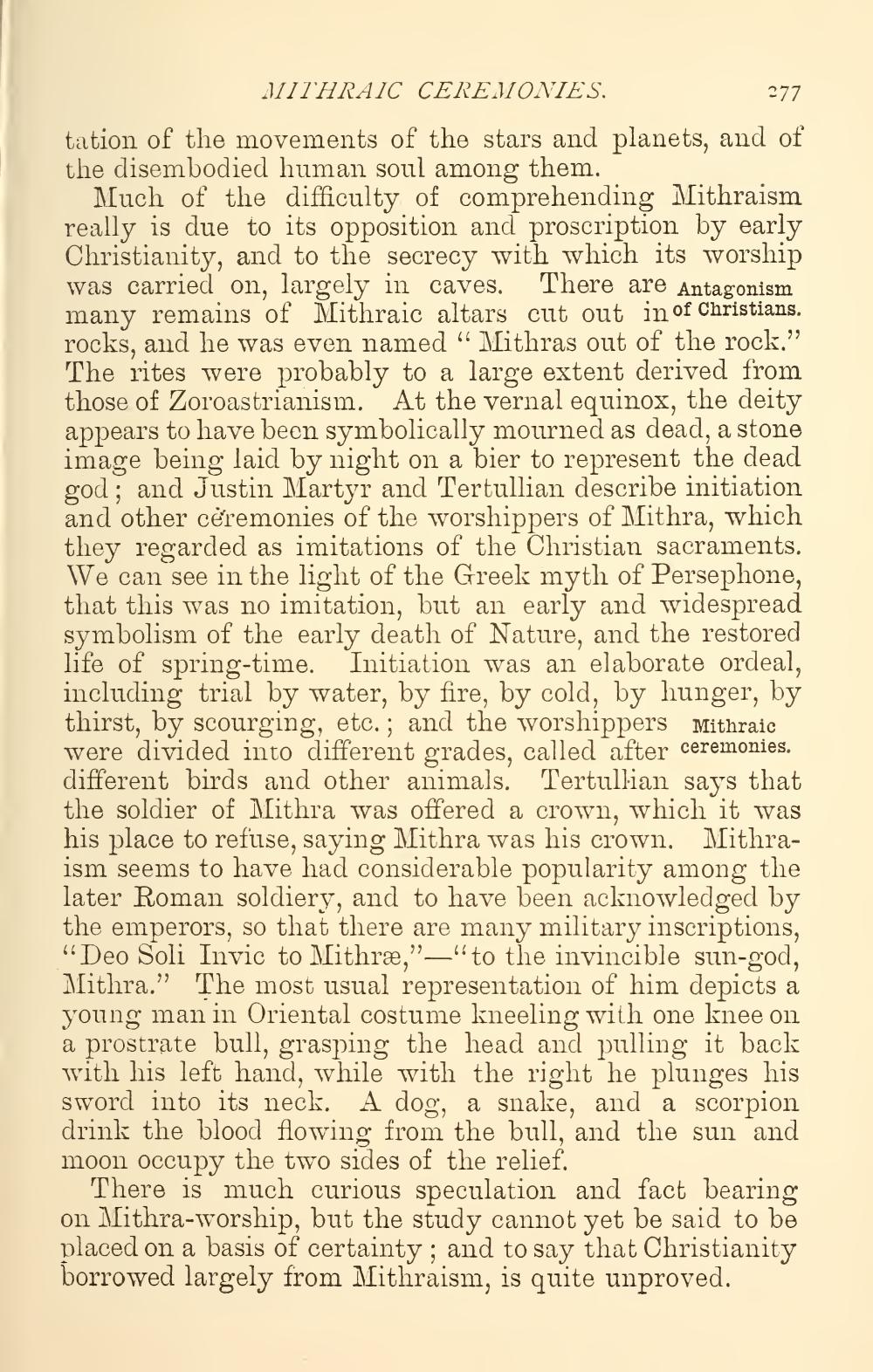________________
MITHRAIC CEREMONIES.
277
tation of the movements of the stars and planets, and of the disembodied human soul among them.
Much of the difficulty of comprehending Mithraism really is due to its opposition and proscription by early Christianity, and to the secrecy with which its worship was carried on, largely in caves. There are Antagonism many remains of Mithraic altars cut out in of Christians. rocks, and he was even named "Mithras out of the rock." The rites were probably to a large extent derived from those of Zoroastrianism. At the vernal equinox, the deity appears to have been symbolically mourned as dead, a stone image being laid by night on a bier to represent the dead god; and Justin Martyr and Tertullian describe initiation and other ceremonies of the worshippers of Mithra, which they regarded as imitations of the Christian sacraments. We can see in the light of the Greek myth of Persephone, that this was no imitation, but an early and widespread symbolism of the early death of Nature, and the restored life of spring-time. Initiation was an elaborate ordeal, including trial by water, by fire, by cold, by hunger, by thirst, by scourging, etc.; and the worshippers Mithraic were divided into different grades, called after ceremonies. different birds and other animals. Tertullian says that the soldier of Mithra was offered a crown, which it was his place to refuse, saying Mithra was his crown. Mithraism seems to have had considerable popularity among the later Roman soldiery, and to have been acknowledged by the emperors, so that there are many military inscriptions, "Deo Soli Invic to Mithræ,"-"to the invincible sun-god, Mithra." The most usual representation of him depicts a young man in Oriental costume kneeling with one knee on a prostrate bull, grasping the head and pulling it back with his left hand, while with the right he plunges his sword into its neck. A dog, a snake, and a scorpion drink the blood flowing from the bull, and the sun and moon occupy the two sides of the relief.
There is much curious speculation and fact bearing on Mithra-worship, but the study cannot yet be said to be placed on a basis of certainty; and to say that Christianity borrowed largely from Mithraism, is quite unproved.




